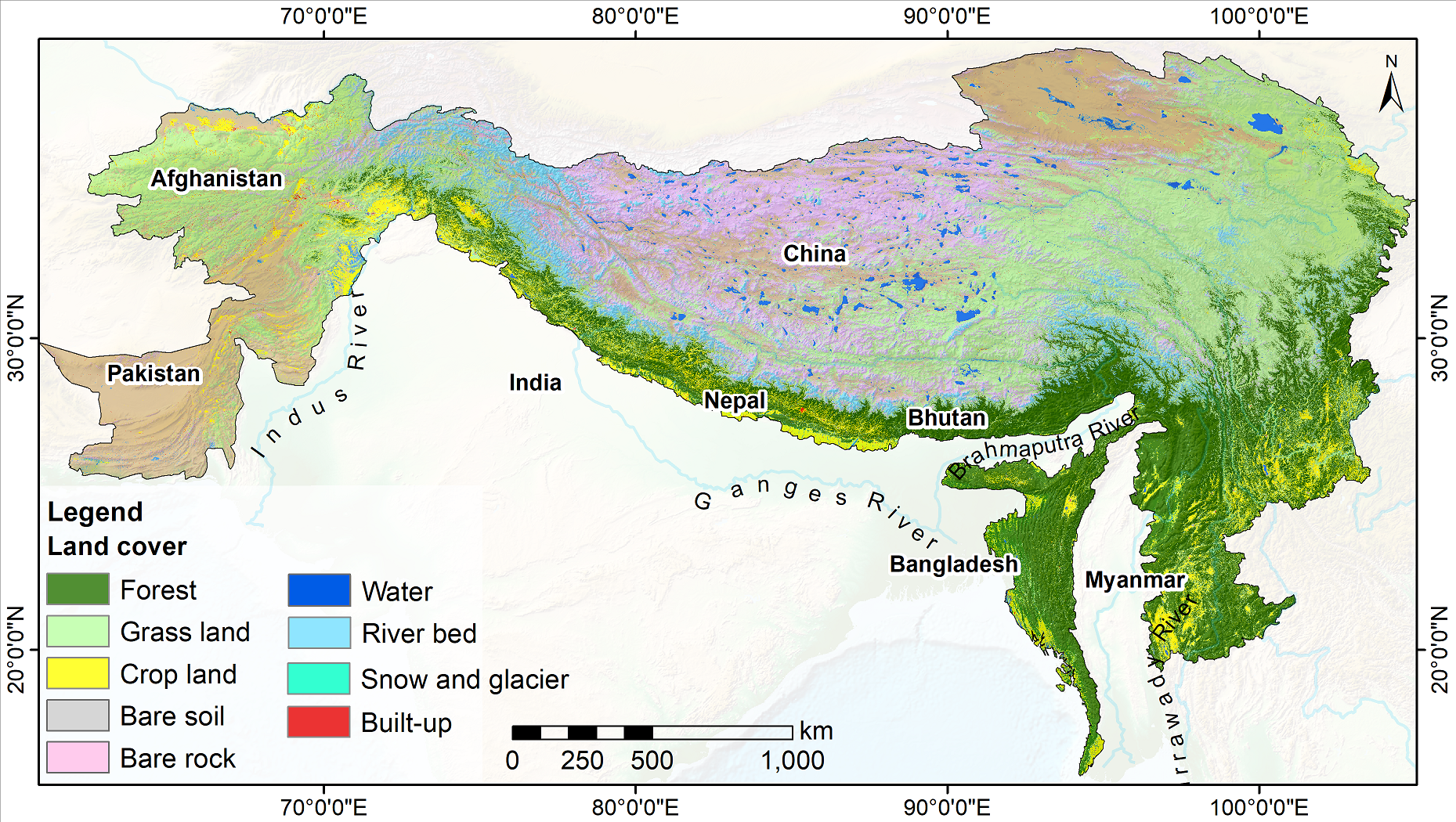continual
Type of resources
Topics
Keywords
Contact for the resource
Provided by
Representation types
Update frequencies
status
Scale
-

The annual land cover data of Afghanistan (2000-2018) have been created through the National Land Cover Monitoring System (NLCMS) for Afghanistan. The system uses freely available remote-sensing data (Landsat) and a cloud-based machine learning architecture in the Google Earth Engine (GEE) platform to generate land cover maps on an annual basis using a harmonized and consistent classification system. The NLCMS is developed by International Centre for Integrated Mountain Development (ICIMOD) together with Afghanistan’s Ministry of Agriculture, Irrigation and Livestock (MAIL) and National Statistic and Information Authority (NSIA). The NLCMS system is customized from the Regional Land Cover Monitoring System (RLCMS) which is a collaborative effort between SERVIR-HKH at ICIMOD and SERVIR-Mekong at the Asian Disaster Preparedness Center (ADPC), with co-development partners - the United States Forest Services (USFS), SilvaCarbon, and Global Land Analysis and Discovery (GLAD) group at the University of Maryland.
-

Land cover change is a significant contributor to environmental change. The degradation of forests and conversion of natural areas, forests, and farmlands to other land use impact ecosystem services and biodiversity significantly. Using multiple methodologies and input data sources, national agencies in different countries of the Hindu Kush Himalayan region have conducted land cover mapping at various times. Due to the differences in classification schema, methodologies, and input data sources used, currently available land cover data is not suitable for analysis of land cover changes over time. ICIMOD collaborated with SERVIR-Mekong at Asian Disaster Preparedness Center (ADPC), Afghanistan’s Ministry of Agriculture, Irrigation and Livestock, Bangladesh’s Forest Department, Nepal’s Forest Research and Training Centre, Myanmar’s Forest Department, SilvaCarbon, the Global Land Analysis and Discovery (GLAD) laboratory at the University of Maryland, and the United States Forest Services to develop the Regional Land Cover Monitoring System (RLCMS) for the HKH region. The system uses state-of-the-art remote sensing science and technology on the Google Earth Engine, and a standard set of input data sources to regularly generate high-quality land cover data at the regional level for the HKH, and at national levels for Afghanistan, Bangladesh, Myanmar, and Nepal. In developing the RLCMS, ICIMOD focused on collaboration and co-development with partner organizations to define different land cover typologies/classes, collect reference data samples, and validate results. Land cover maps for the HKH region spanning 2000–2022 have been produced under its SERVIR–HKH Initiative.
 Metadata Catalogue
Metadata Catalogue